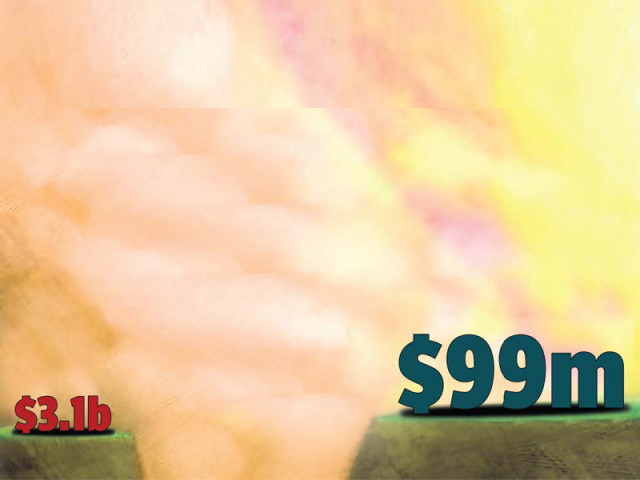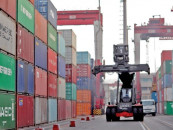Current account switches to surplus
High exports, record remittances wipe out deficit.

Pakistan’s current account turned into a surplus of $99 million in nine months (July-March) of the current fiscal year 2010-11, which came in the wake of a sharp increase in exports and record remittances from overseas Pakistanis, shows data released by the State Bank of Pakistan on Monday.
In the corresponding period last year, the country recorded a current account deficit of $3.1 billion. In eight months (July-February) this fiscal, the current account showed a deficit of $248 million, but that was wiped out by a big surplus of $347 million in March.
In the month, the balance of payments got a boost from a record $1.05 billion in remittances sent home by overseas Pakistanis and exports worth $2.52 billion – the third consecutive month when exports had been above $2 billion.
“High remittances and a low trade deficit are the major factors that propelled the current account in surplus in July-March this fiscal,” said Khalid Iqbal Siddiqui, Head of Research Invest and Finance Securities.
He said the current account surplus would strengthen the rupee and ease inflation, a major challenge for the central bank which has increased interest rate three times to 14 per cent this fiscal to check the increase in prices. Earlier, the current account deficit had put pressure on the rupee, leading to a fall in its value and an increase in inflation.
In nine months, remittances rose 22 per cent to $8.02 billion compared to $6.55 billion in the corresponding period in the previous year as more and more expatriates opted for legal channels after a government crackdown on illegal systems and introduction of simplified and quick procedures for money transfer.
Exports jumped 25 per cent to $17.94 billion compared to $14.35 billion last year, supported by high prices of export products, particularly textile, in the international market. On the other hand, imports increased 15 per cent to $25.96 billion compared to $22.54 billion last year. These resulted in a decline of 2.2 per cent in trade deficit to $8.01 billion against $8.19 billion last year.
Siddiqui said the current account surplus may come down in coming months if oil imports increased. Prices of oil, the major import item of the country, have increased in recent months following political turmoil in the oil-producing Middle East and North Africa region.
On Monday, crude prices in the London market stood around $121 per barrel compared to around $90 per barrel four months ago. “Current account may break even at the end of the fiscal year in June,” Siddiqui said.
Published in The Express Tribune, April 19th, 2011.


















COMMENTS
Comments are moderated and generally will be posted if they are on-topic and not abusive.
For more information, please see our Comments FAQ